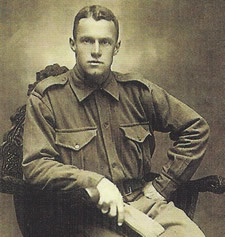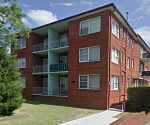ANZACs and sports stars: Room for both?
Heroes come in many shapes and forms – on the sporting field, in emergency services, the general community and of course the military. For this year’s ANZAC Day Brigadier Tim Hanna says there is room in our society to respect the courage and determination of our forebears as well as that of today’s sports stars.
Each year around ANZAC Day, many sporting competitions across the country link their sport to ANZAC Day and the ANZAC Spirit. Deeds of bravery are told – sometimes about those who deployed to far flung lands which Australia has militarily committed to over the last 100 years and sometimes about champion footballers, netballers and rugby league players.
During this period and throughout the year there is also much use of the term ‘hero’ when describing our sports men and women as much as when describing the exploits of Victoria Cross recipients.
Of course, heroes are not the exclusive domain of those who have served in the Navy, Army or Air Force in the defence of this country. Heroes exist in our emergency services every day. They exist in the general community either through acts of physical or moral bravery in the face of extreme adversity. Who is braver? Is it a question that we even need to ask?
Each year, teams of 20 to 30 year old ‘heroes’ battle each other on the ovals and pitches of our suburbs and towns. Many will be injured. Some will have their careers ended and lives permanently changed by their sports experiences. So too have many veterans of war. However, the experiences of the 20 to 30 year olds who fought at Gallipoli or the Western Front, North Africa or New Guinea, Korea or Vietnam or even Iraq or Afghanistan are not the same as that of the local footballer. We do not talk hamstrings and anterior cruciate ligaments or concussion when considering the veterans of past and current wars. We are talk about killing and significant physical and psychological maiming of the worst possible kind as adversaries seek to render the utmost violence on each other.
For the most part I think that sports clubs are reverential and considerate of the ANZAC story and so do not seek to overplay the ANZAC theme and, in particular, what a real hero is. Indeed, I think that many winners of local ANZAC Day sporting medals are somewhat humbled by their experience especially when it is presented by a veteran, dare I say a true ‘hero’.
On 25 April 2015 many young men stormed ashore at Gallipoli. There were well known sportsmen amongst them.
One was Philip de Quetteville Robin. Phil Robin was an all-round sportsman but an exceptional Australian Rules footballer. 
Born in 1884, Robin made his league debut with Norwood in the South Australian competition in 1908, and was widely acknowledged as one of the finest wingmen in the game. An interstate representative on seven occasions, he played in South Australia’s victorious 1911 carnival. That same year he received Norwood’s best and fairest player award. Scrupulously fair, Robin delighted fans with his electrifying dashes down the wing, weaving and dodging his way past opponents.
A highly regarded accountant with the Bank of Adelaide when war was declared, Robin was one of the early enlistees, signing up ten days after the camp at Morphettville race course was opened in 1914. Robin was allocated to ‘A’ Company of the 10th Infantry Battalion, the first unit raised in South Australia. The Battalion trained in the dust and lived in bell tents erected at the race course before deploying to Egypt.
Robin was among the first ashore at Gallipoli on 25 April 1915.
He landed with the Battalion scouts and distinguished himself that day by penetrating the greatest distance inland of any Australian. With his mate Arthur Seaforth Blackburn (later a Victoria Cross recipient at Pozieres) he reached his farthest point after circling the east side of Scrubby Knoll to the north of it, a direct distance of about 2,000 yards from the beach at Anzac Cove.
Sadly, Robin was killed on the first day of the Gallipoli campaign. His body was never recovered. He has no known grave like many of his comrades who were struck down in the scrub covered hills and ravines of Gallipoli and is listed as “Missing presumed Killed in Action”. Although famous within his time, Robin did not seek special treatment. He did his task as was required of him with typical resolve. Was he a hero? Was his sacrifice any more substantial than that of any other soldier? Of course not.
Which came first – the spirt of ANZAC or sport? Australia was already a strong sporting nation when we went to war in 1914. Today, young men and women are recruited into the Australian Defence Force, in part, on the basis of how they support their mates and their team ethic, much of which comes from our sporting attitudes and participation.
Sports clubs abound with motivational statements and espouse the values for which they stand. Often these include terms such as courage, teamwork and persistence. They are terms we readily associate with the ANZAC spirit.
In this era of excessive star adulation, we just need to keep things in perspective. There is room to respect our forebears and their courage and determination as well as that of the sports stars of today.
Material on Phil Robin was sourced from the RSL Virtual War Memorial at https://rslvirtualwarmemorial.org.au/
Brigadier Tim Hanna AM is RSL South Australia’s State President.













